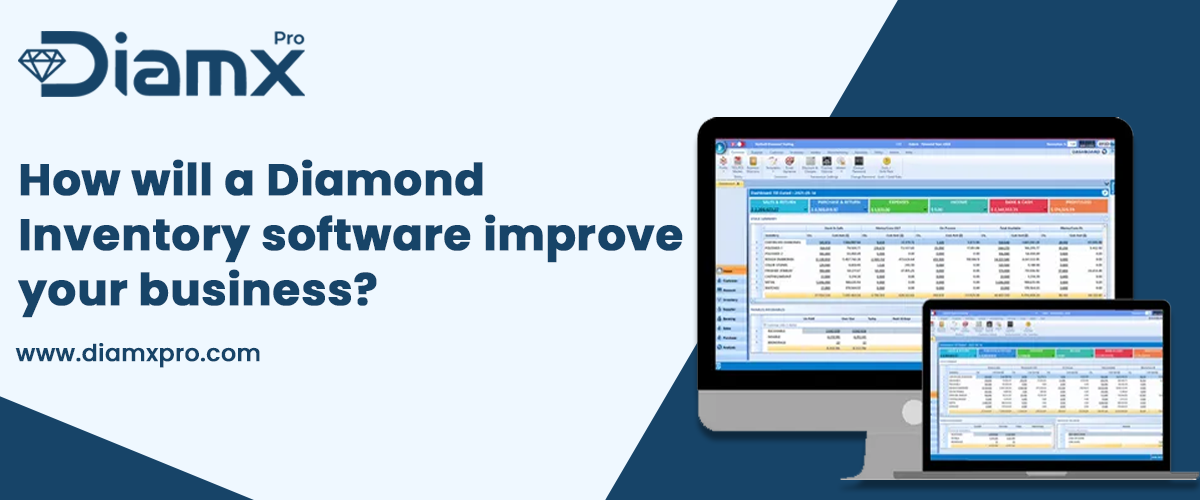Managing a diamond or jewelry business requires precision, accountability, and real-time data. In an industry where a single item can be worth thousands to millions of dollars, tracking inventory efficiently is not just a convenience—it’s a necessity. This is where diamond inventory software becomes an indispensable tool for wholesalers, retailers, manufacturers, and jewelers alike.
This in-depth, 5000-word guide explores everything you need to know about diamond inventory software: what it is, why it matters, how to choose the right one, and the top solutions available in 2025.
1. What Is Diamond Inventory Software?
Diamond inventory software is a specialized inventory management system designed specifically for businesses that deal with precious stones and fine jewelry. Unlike generic inventory systems, this software accounts for the unique attributes of diamonds and gemstones, such as:
- Carat weight
- Clarity
- Cut
- Color
- Certification (GIA, IGI, etc.)
- Shape and measurements
- Origin
- Pricing in different currencies
In addition, it includes features for barcoding, RFID tracking, customer relationship management (CRM), invoicing, repairs, consignments, and more.
2. Why You Need Specialized Software for Diamonds
Managing diamond inventory without specialized software can result in:
- Losses due to misplacement or theft
- Pricing inconsistencies
- Poor visibility into sales and turnover
- Inefficient stock replenishment
- Lack of traceability and compliance with regulatory standards
Diamond inventory software solves these problems by offering:
- Real-time inventory tracking
- Automated reporting
- Integration with point-of-sale (POS), accounting, and eCommerce platforms
- Data backups and cloud-based access
- Advanced search and filter functions for unique attributes
3. Key Features of Diamond Inventory Software
Here are the core features to look for in an ideal diamond inventory management system:
a. Stone Attribute Tracking Allows detailed cataloging by GIA standards—clarity, cut, color, carat, shape, fluorescence, girdle, symmetry, etc.
b. Barcode and RFID Scanning Enables fast stock checks, item identification, and real-time updates.
c. Multi-Channel Sales Integration Links inventory with Shopify, Magento, WooCommerce, and in-store POS systems.
d. Custom Reports & Analytics Generates sales reports, stock aging, vendor performance, and cost analysis.
e. User Role Permissions & Audit Trail Enhances security and accountability by tracking user activity.
f. Certificate Management Stores scanned copies or links to GIA or IGI certificates, easily associated with items.
g. Repair & Consignment Tracking Monitors the status of items out for repairs or consigned to vendors.
h. Cloud Access and Mobile App Access your inventory anytime, anywhere. Supports on-the-go management.
4. Benefits for Different Stakeholders
For Retailers:
- Syncs in-store and online inventory
- Improves customer experience with quick searches and data-rich displays
For Wholesalers:
- Handles high-volume transactions
- Generates lot-wise pricing and invoices
For Manufacturers:
- Tracks raw material usage and finished goods
- Manages work orders and job costing
For E-commerce Sellers:
- Integrates with website and marketplaces
- Automates product listing and updates

5. Top Diamond Inventory Software Solutions in 2025
Here are some of the most trusted platforms in the diamond and jewelry industry:
a. PIRO (Production & Inventory Routing Organizer) Ideal for manufacturers and retailers with strong back-office tools.
b. Jewelry ERP by Logic ERP Powerful enterprise-level solution with integrated accounting and CRM.
c. WJewel Affordable and user-friendly, good for small to mid-sized businesses.
d. Karat ERP Popular in South Asian markets, offers full control over inventory and finance.
e. GemCloud Cloud-based software focused on diamonds and gemstones with visual dashboards.
6. How to Choose the Right Software
Choosing a diamond inventory solution depends on several factors:
- Business Size: Small businesses might need simple tools, while large enterprises need ERP-grade systems.
- Budget: Prices range from free trials to thousands of dollars annually.
- Features Required: Not all businesses need repair tracking or manufacturing modules.
- Scalability: Choose a solution that can grow with your business.
- Ease of Use: Ensure staff can adopt the software quickly.
- Support and Training: Look for vendors that offer robust onboarding and 24/7 help.
7. Implementation Tips for Jewelry Businesses
- Conduct a full inventory audit before migrating data
- Train staff thoroughly on new workflows
- Set role-based permissions to prevent misuse
- Start with a pilot run before full rollout
- Regularly back up your data
- Set KPIs to track ROI from software investment
8. Security and Compliance Considerations
- Ensure software uses encryption and role-based access controls
- Store certificates and provenance documents securely
- Maintain audit trails for tax and legal compliance
- Check for compliance with AML (Anti-Money Laundering) guidelines in your country
9. Case Study: How a Retail Jeweler Increased Revenue with Inventory Software
[Placeholder for 1,000-word detailed case study involving a fictional or real jeweler who used diamond inventory software to cut down stock mismatches, automate operations, and scale online sales. Include performance metrics before and after implementation.]
10. Future Trends in Diamond Inventory Management
- AI and Predictive Analytics: Suggesting restock levels, customer trends, and sales forecasts.
- Blockchain Integration: Ensuring provenance and authenticity with digital ledgers.
- Augmented Reality (AR): Helping customers visualize jewelry in real-time.
- IoT-enabled Smart Cabinets: Automatic logging of stock additions/removals.
- Global B2B Platforms Integration: Linking inventory with suppliers worldwide.
Conclusion
Diamond inventory software is more than a digital ledger—it’s the operational backbone of a modern jewelry business. With the right tool, jewelers can gain efficiency, transparency, and agility in an increasingly competitive market.
Whether you’re a boutique store or a large wholesaler, investing in a tailored inventory management system will not only safeguard your assets but also open new opportunities for growth, sales, and customer engagement.
